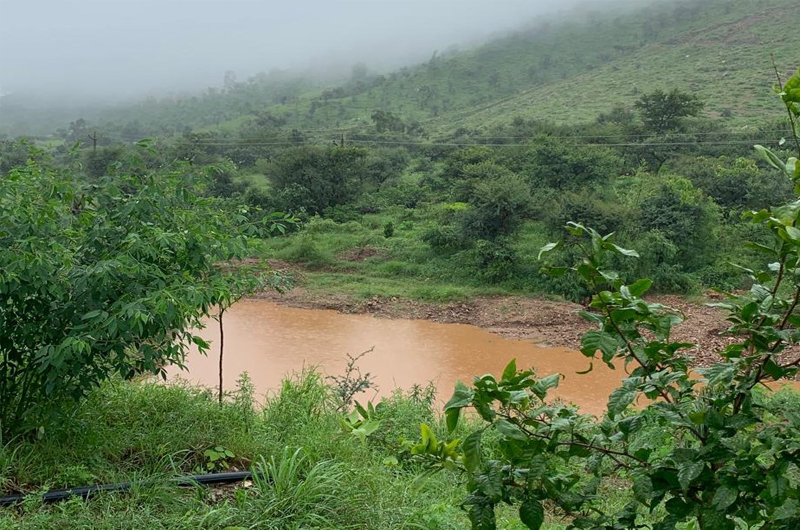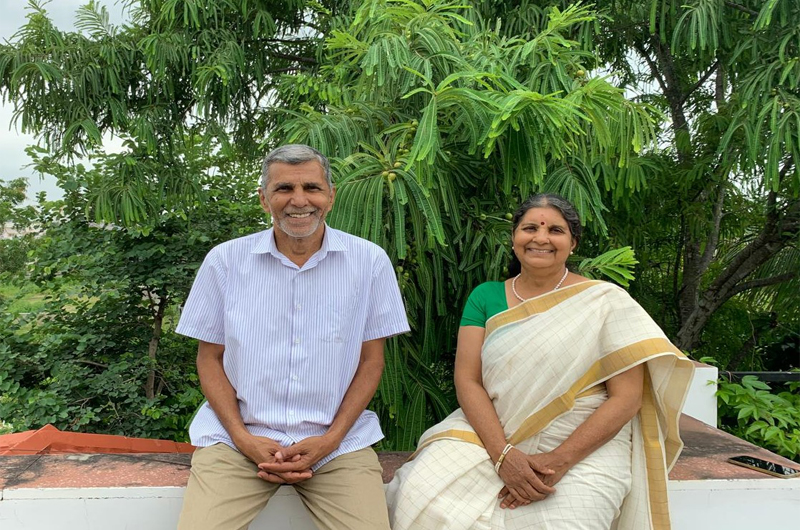A retired government employee and his wife in Udaipur, Rajasthan have shown how it is possible to protect and regenerate land that functions as ‘lungs’ in both rural and urban areas – an inspiring example of how a single city-based family of limited means can contribute significantly to increasing greenery and protecting the environment at the home, neighborhood and village levels. Bharat Dogra tells the inspiring tale of Bajrang and Mridula
When Bajrang Sharma retired from government service after serving in senior positions in the state of Rajasthan, he could take particular satisfaction from two aspects of his long and distinguished career. Firstly, he was exceptionally close to several famous social activists as well as some government officials known for their understanding of the needs of weaker sections. This had given him a very high motivation for doing his best for weaker sections. He was able to make significant improvements in cases like the resettlement of those displaced by the Bisalpur Project (a crucial water resources project in Rajasthan involving a dam in Bisalpur, Tonk District).
Secondly, at his various postings throughout the state, Bajrang had tried to green nearby areas by planting trees, giving preference to useful and hardy indigenous species instead of the commonly preferred decorative plants. In this, he received consistent and valuable support from his wife Mridula, who shared his passion for trees, greenery and environment protection.
After retirement, Bajrang and Mridula were looking forward to a quiet life in their new home in Udaipur which they had created in accordance with their passion for environment protection. It includes rooftop water harvesting facilities with a storage capacity of about 30,000 litres, and a solar rooftop electricity system to generate 32 units a day – enough to leave a surplus after meeting their needs. Care was taken to avoid over-construction, preventing avoidable waste of building materials and also reducing costs.
A large part of the space is devoted to a garden, which includes space for multi-layer vegetable cultivation. The home garden meets most of their needs for vegetables, legumes, oilseeds, fruit and spice and yields enough to gift their friends too. The cultivation is carried out using natural methods, avoiding chemical fertilizers, pesticides and weedicides.
Bajrang and Mridula were content with their dream garden and home, but then they heard that influential and wealthy persons were encroaching on a nearby area earmarked for green cover, for construction, and this was likely to increase. Bajrang moved fast to meet the concerned officials so that a fence could be built to protect the space. Simultaneously, Bajrang and Mridula, along with several neighbours like software engineer Kanti Jinger, initiated steps to plant some 50 species of trees on the land. Water bodies for birds and ways for rainwater to be absorbed and retained in the soil were created. There is now scope for developing the area as a botanical garden for the benefit of schoolchildren.

places and dug contour trenches so that the rapid and torrential flow of rainwater from the hills can be checked, curbing soil erosion and instead
conserving water.
When a small piece of land which had suffered soil and water erosion in the nearby Jogion Ka Guda Village in Gogunda Block became available at a low rate, Bajrang and Mridula were willing to buy it, even though the sole well there had dried up. They wanted to work on it to conserve soil and water, thereby setting an example of how degraded land can be revived. Mridula says: “Our aim is not to earn from this land, but instead to put in whatever savings and efforts we can to increase greenery and conserve water here.”
So, during the past four years, with the help of workers, Bajrang and Mridula have created stone bunds at carefully selected places and dug many contour trenches so that the rapid and torrential flow of rainwater from the hills can be checked, curbing soil erosion and instead conserving water. In addition, they have planted about 1000 trees of many different species (including fruit trees), several species of grass and bushes and some varieties of crops, all of which are grown using natural farming techniques.
Bajrang also contacted government departments and panchayats so that work under MGNREGA could be carried out for greening the hills above the land. Water availability in the well has gone up, firming up hopes for regeneration. The couple is also involved with several other social initiatives such as education and mentoring of girls from weaker sections. Bajrang and Mridula are an inspiring example of how a single city-based family of limited means can contribute significantly to increasing greenery and protecting the environment at the home, neighborhood and village levels.
(The writer is a senior freelance journalist and author who has been associated with several social movements and initiatives. He lives in New Delhi.)



 from Webdoux
from Webdoux